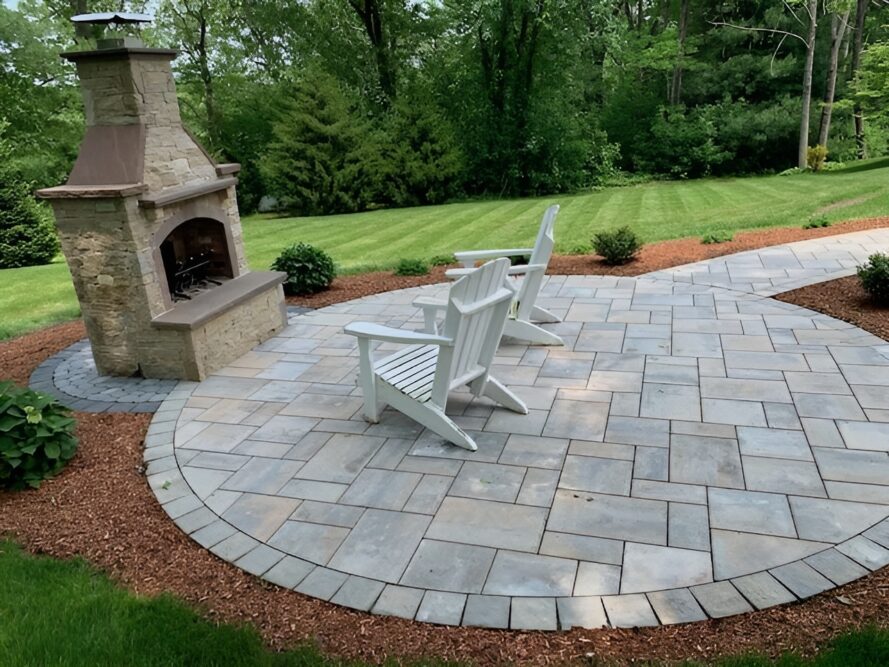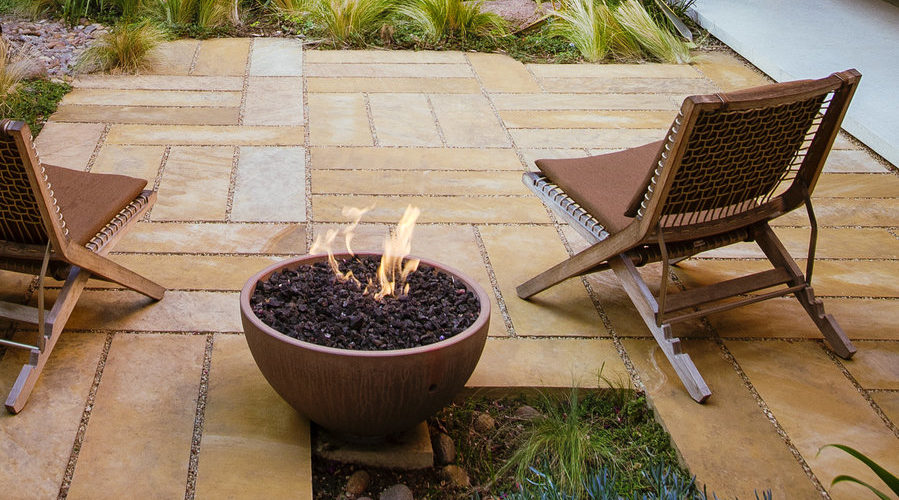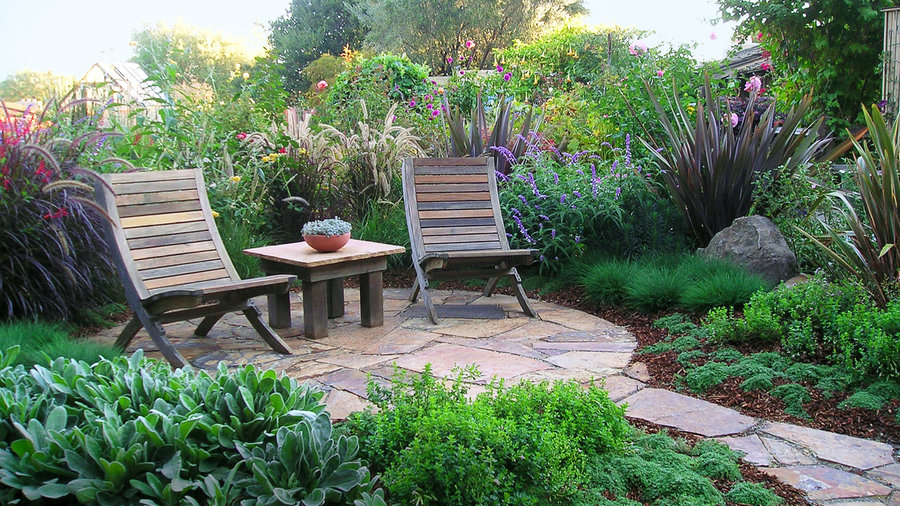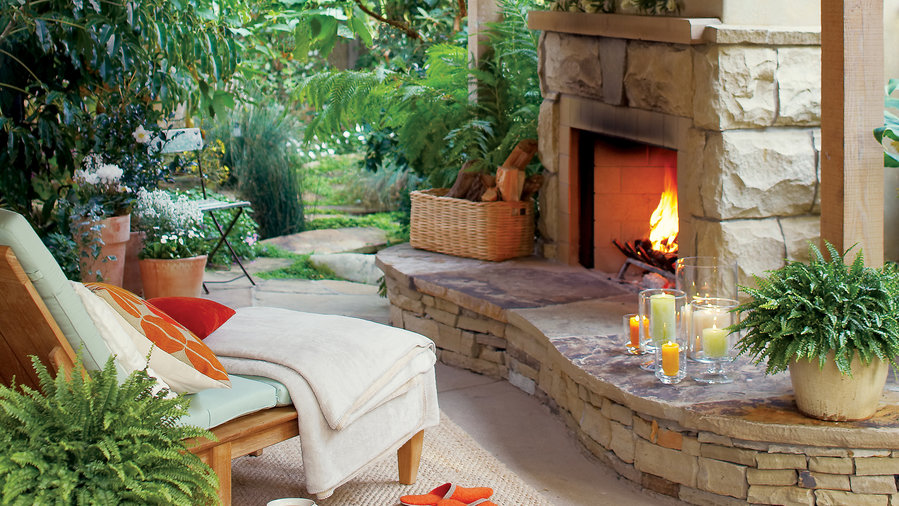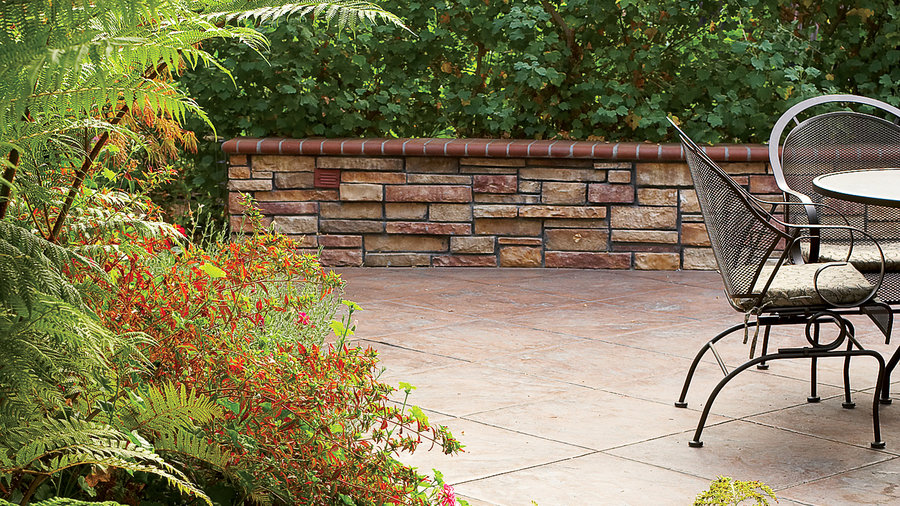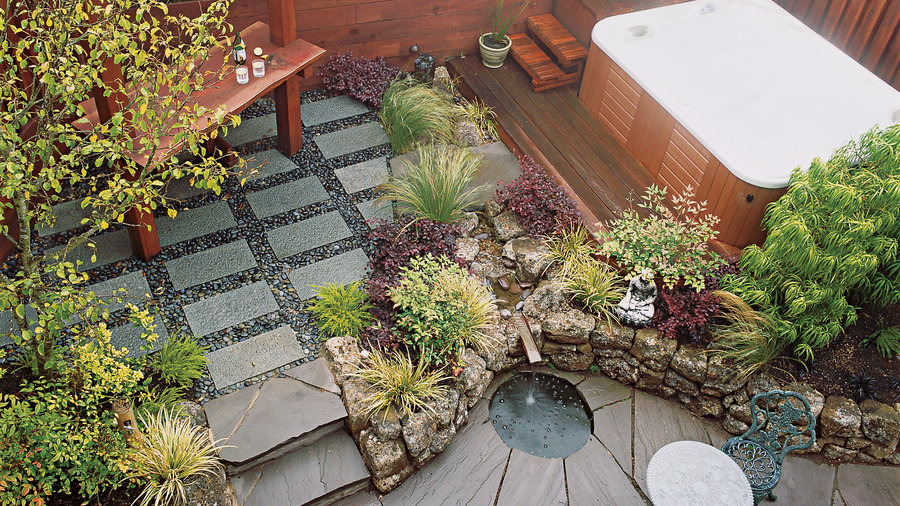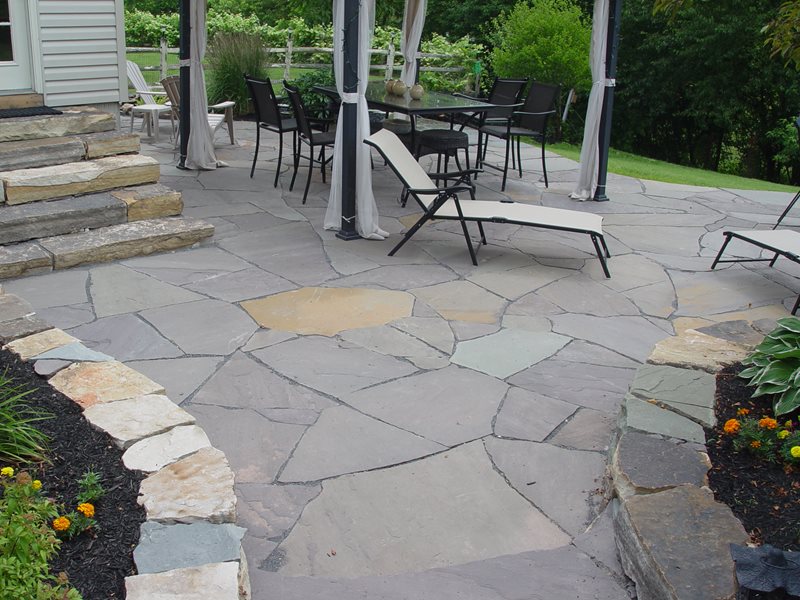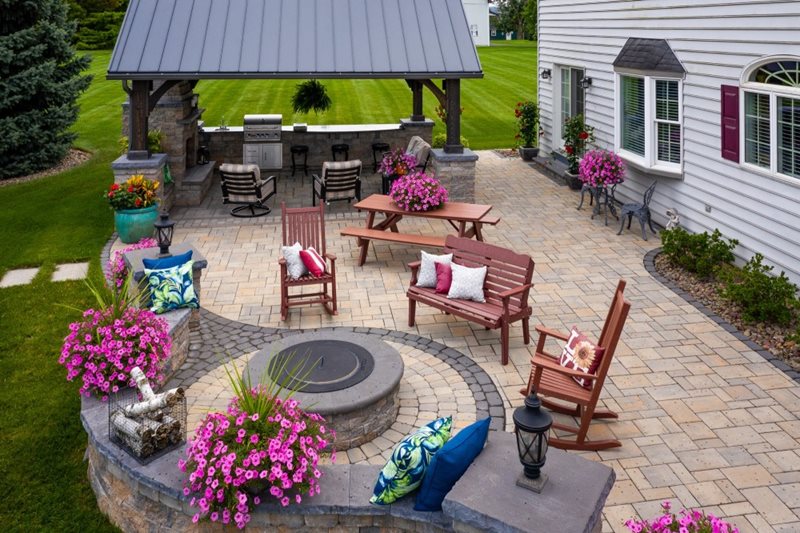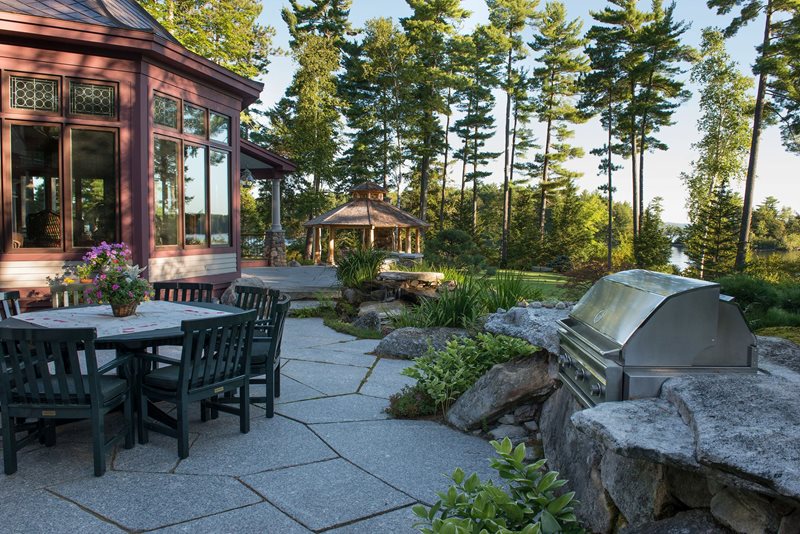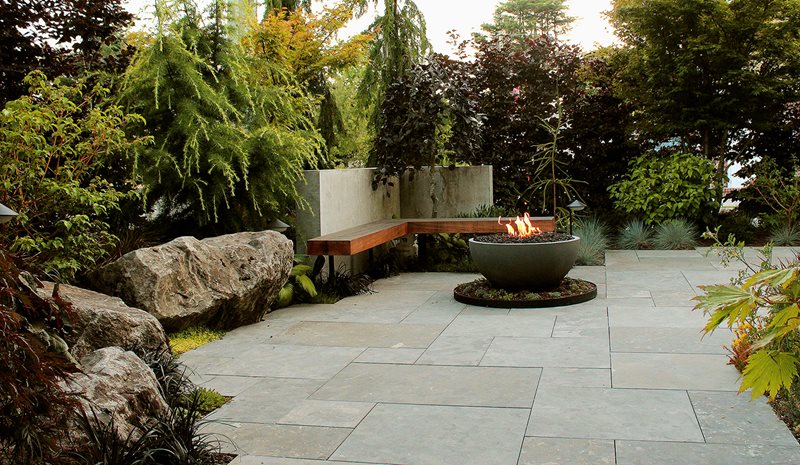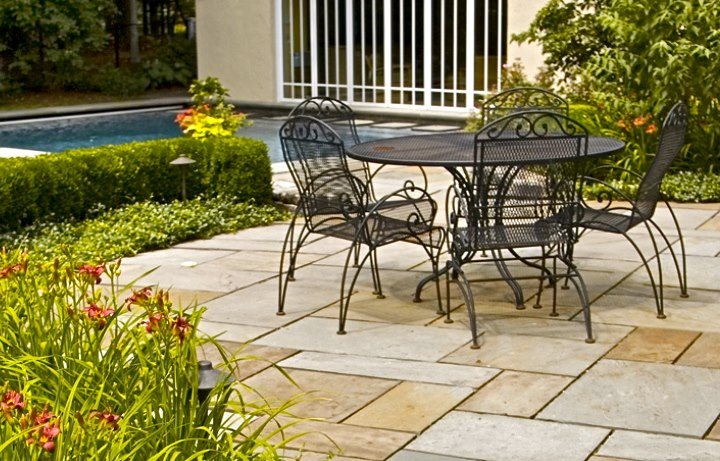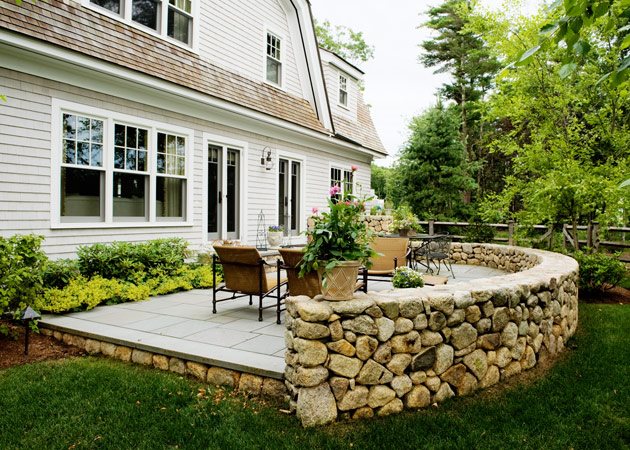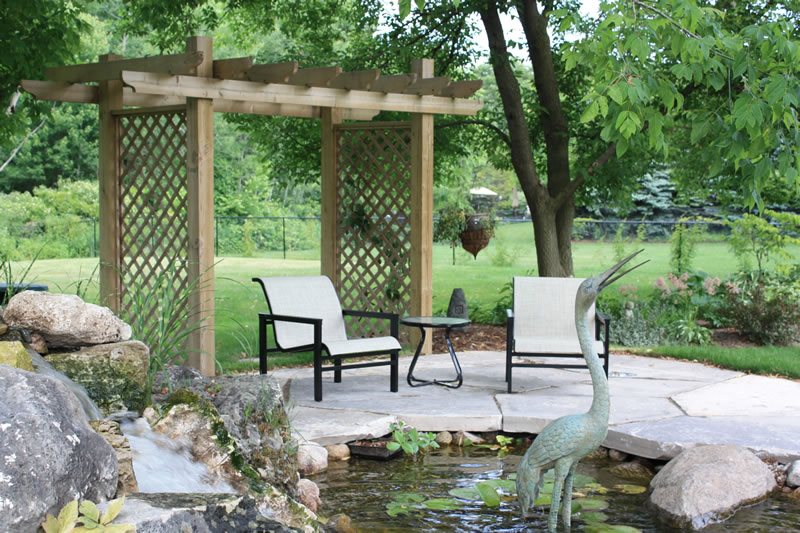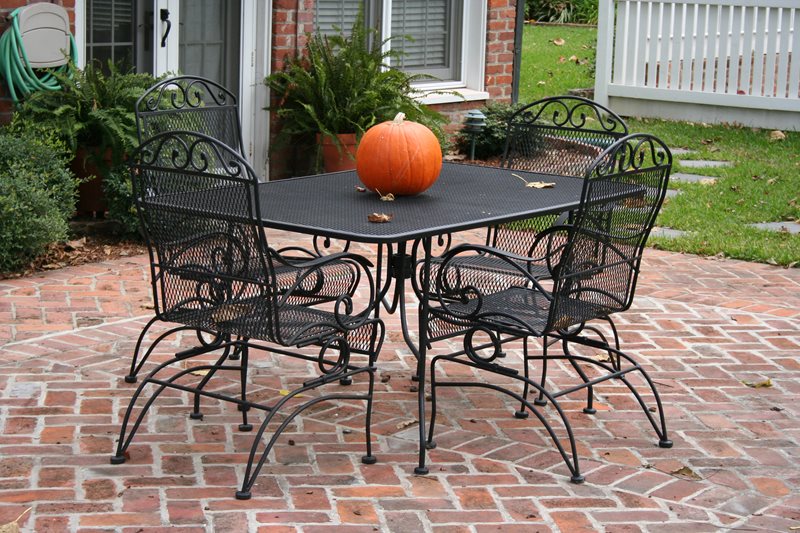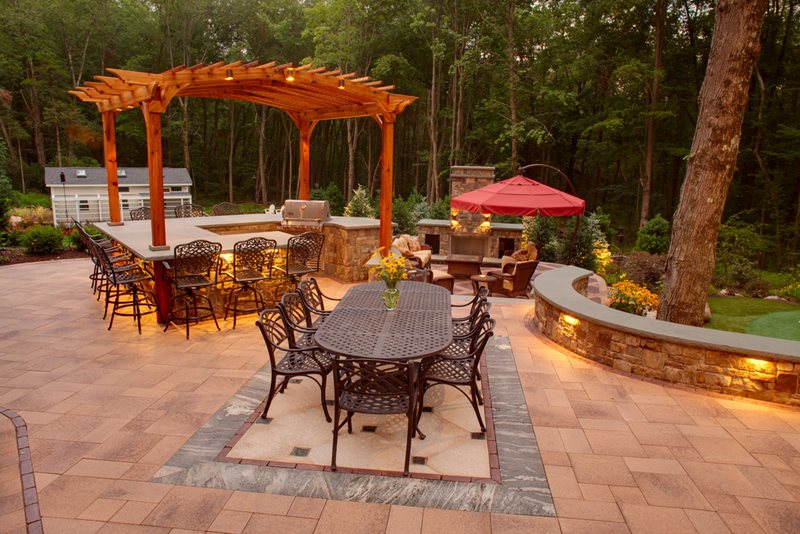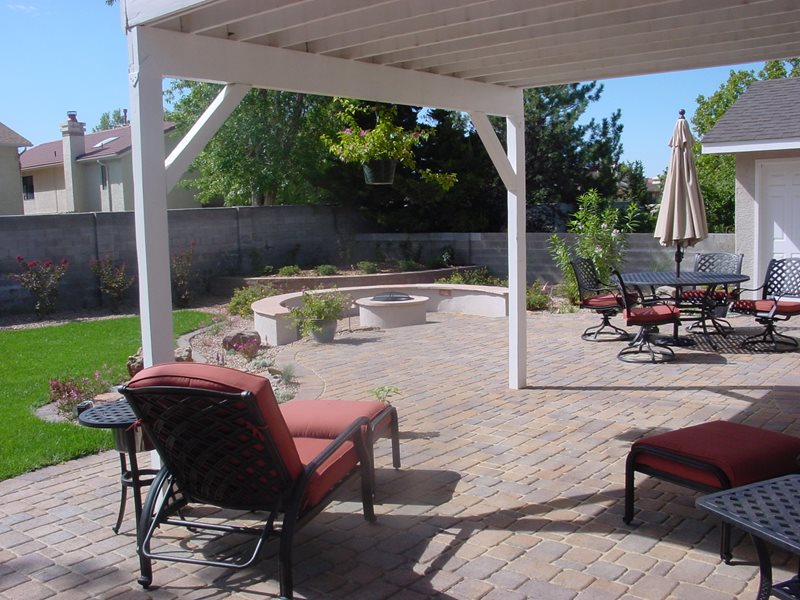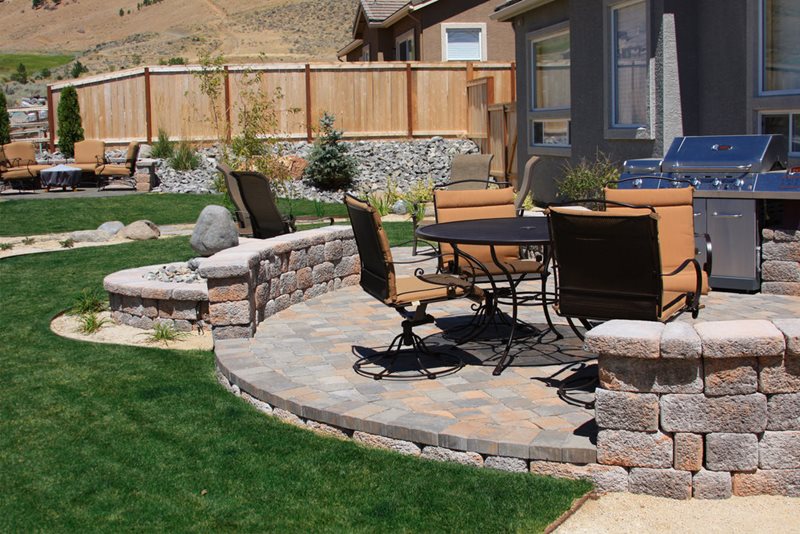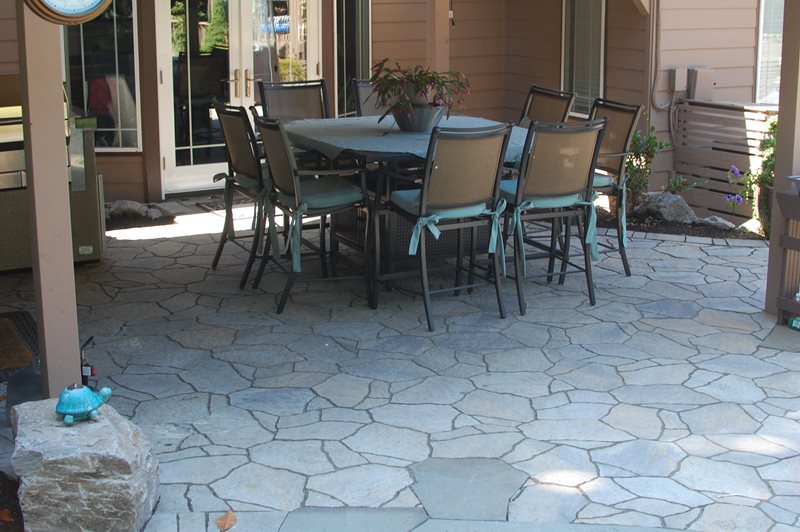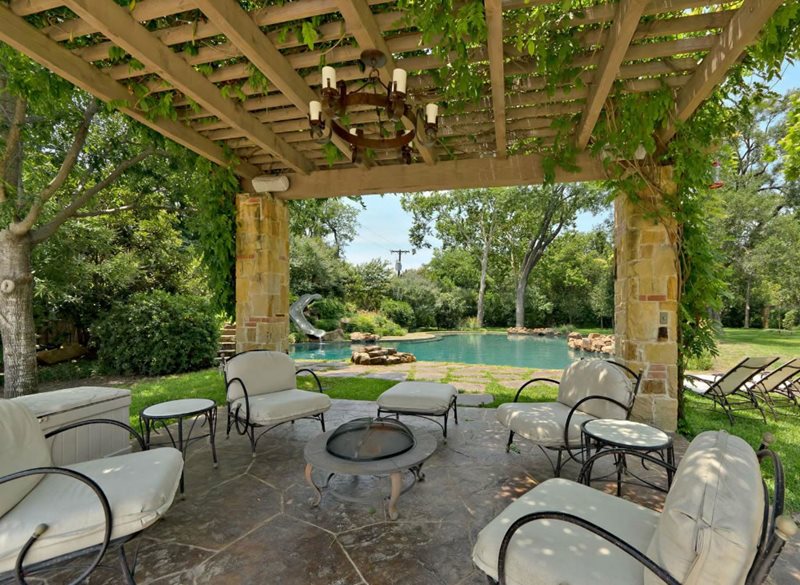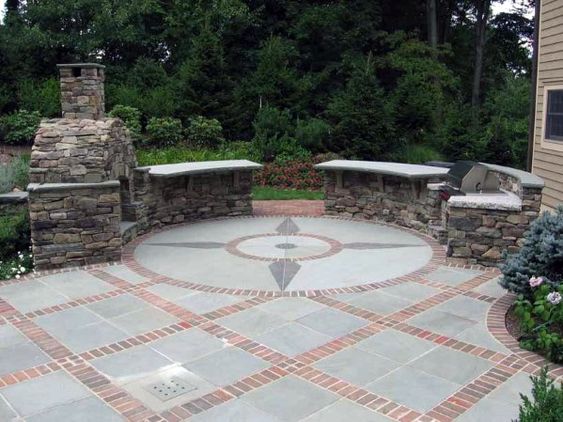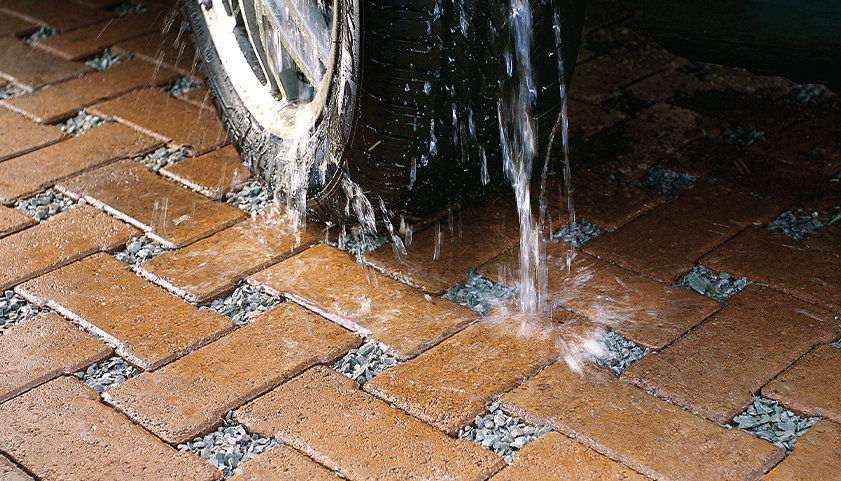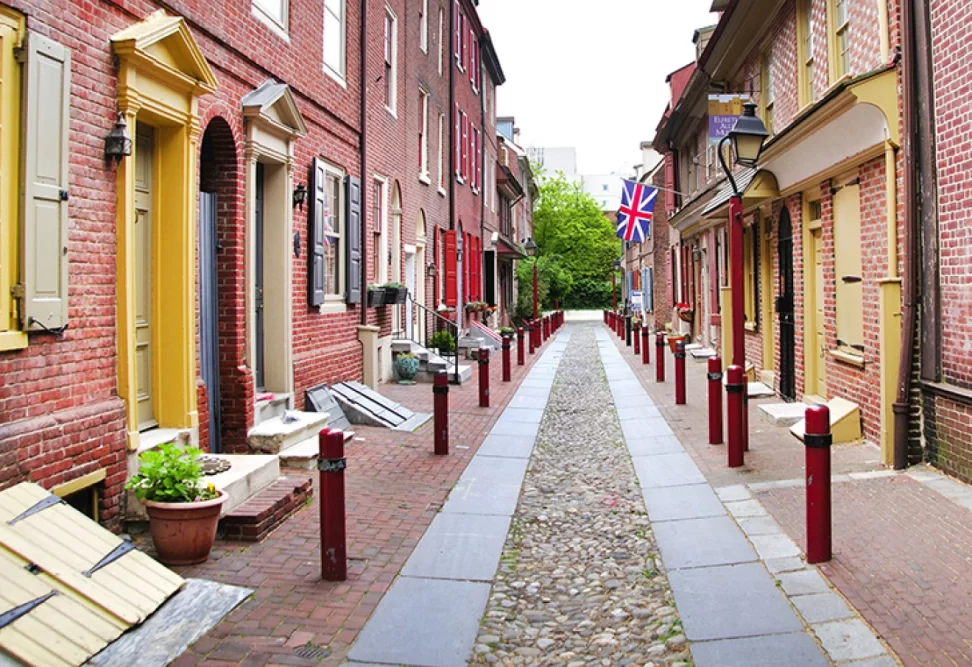If you are looking to install a new patio in your backyard, you may be wondering, “What is the best type of material to use?”
There are many different options available, but one of the most popular is pavers. Pavers have many advantages over other materials, such as asphalt, concrete, or wood.
Top 10 reasons to go with pavers for your patio
- Durability
- Low Maintenance
- Versatility
- Cost Effective
- Faster Installation
- Eco-friendly
- Easy to Repair
- Slip Resistant
- Added Value
- Unlimited Design Options
- Paver Patio Gallery
►Be sure to scroll down and explore the gallery of great patios for inspiration!
1. Durability
Pavers are extremely long-lasting and, with proper care and upkeep, can remain in use for up to 30 years. Slate and travertine stone pavers last for 100 years or more! All pavers are resistant to cracking, fading, staining, and other damage that can be caused by exposure to the elements, such as sun, rain, and snow.
2. Low Maintenance
Pavers require much less maintenance than other materials. Pavers can be cleaned using a pressure washer. They do not have to be repainted or resrained like some other kinds of patio surfaces, or replaced due to rot or insect damage like wood. Pavers are simple to clean with a broom or a garden hose. They are quite easy to maintain.
3. Versatility
There is a vast selection of paver options available in a range of styles, colors, forms, sizes, and textures, allowing you to create a one-of-a-kind appearance that is tailored to your architectural style, terrain, and specific personal preferences. In addition, pavers are available in natural-edged slabs, pre-cut tiles, interlocking tiles, and bespoke shapes. They can be combined to create a variety of custom designs and very complex, geometric and artistic patterns.
4. Cost Effective
When compared to the use of other materials for the construction of your patio, pavers are an economical choice that can save you money. In addition, when factoring in their longevity and low maintenance compared to other types of patio surfaces, the cost of pavers is definitely lower.
5. Faster Installation
Pavers can be laid down on a patio in a shorter amount of time than other materials, such as asphalt or concrete, which makes them an excellent choice for people who are in a hurry to get their patio set up.
6. Eco-friendly
Clay, natural stone, or slate pavers are an environmentally responsible choice for the surface of your patio. During the collection and manufacturing processes, clay, natural stone, and slate pavers demand fewer resources than other materials, making them a very environmentally friendly option.
7. Easy to Repair
If any of your pavers get damaged, it is simple to repair them individually without having to resurface the entire area, as would be necessary if you use cement. Because of this, it is quick, easy, and inexpensive to perform repairs whenever they are required.
8. Slip Resistant
Natural stones, slate, and clay brick patios are slip-resistant because they are constructed from materials that prevent them from becoming slick even when wet. When walking or entertaining on your patio, this is essential for maintaining your safety and comfort.
9. Added Value
If you ever make the decision to sell your house, adding a paver patio will increase both the resale value and the curb appeal of your property.
10. Unlimited Design Options
Since they come in such a vast variety of styles, colors, forms, sizes, and textures, pavers open up a world of design options that are virtually limitless. You have the option of creating a look that is more traditional, or more modern — or one that is uniquely you!
When it comes to installing a new patio, pavers offer many advantages over other materials. With their durability, low maintenance requirements, versatility, cost-effectiveness, and eco-friendliness, pavers will give your patio a polished look that will last for decades. Choosing pavers for your patio is the smart option!
►Explore this gallery of gorgeous paver patios & be inspired!
Hover over the image to pause or use manual controls.

